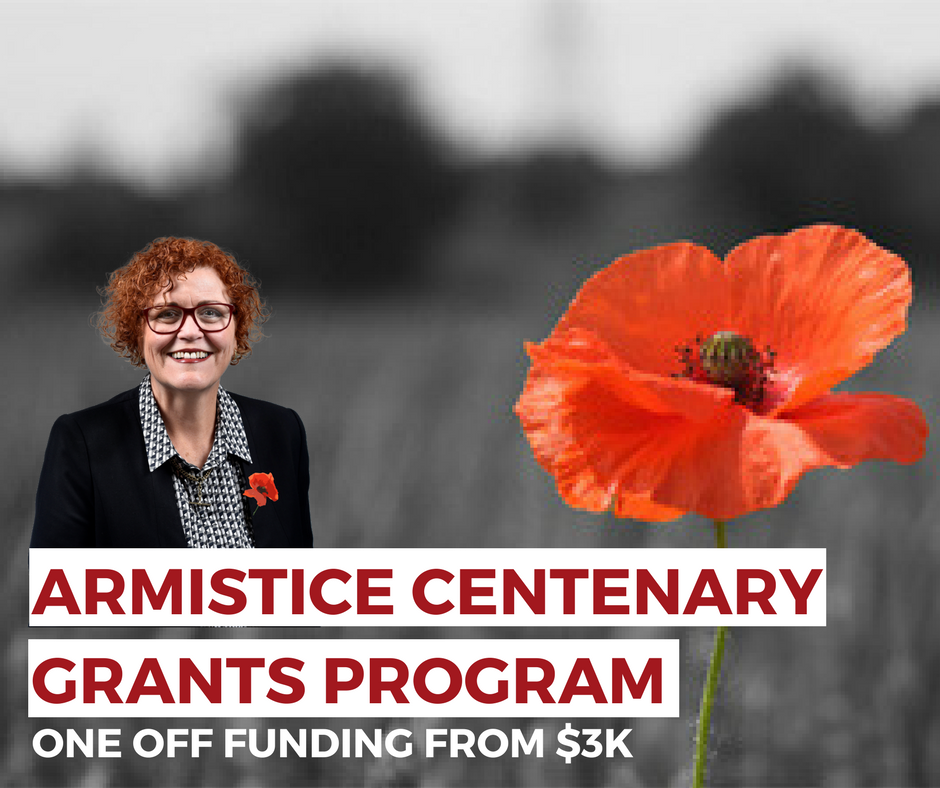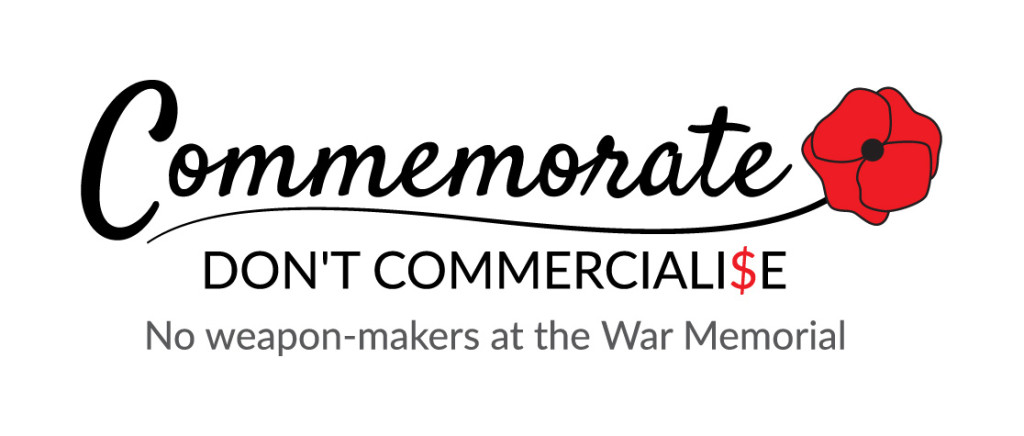‘”Same old, same old” and asking the big questions: two contrasting approaches to war and the future’, Honest History, 20 June 2018
Armistice Centenary Grants Program
Sometimes serendipity plays into the hands of bloggers. Such is the case this week. First, there was a presser from Minister Chester, wearing his Centenary of Anzac hat, announcing the first tranche of payments under the Armistice Centenary Grants Program. As we saw a few years ago with the Anzac Centenary Local Grants Program, grants like this go mostly for pageants, patch-ups (of existing memorials, monuments and remembrance pathways), projects (military heritage and school), and, occasionally, new bricks and mortar constructions of a commemorative nature.
This outcome is not surprising; it is how the grant rules are written. The grant recipients are RSL sub-branches, historical associations, museums, schools, and local government bodies, again, as per the rules. The grant applications go through local federal Members of Parliament, who may well get their name on or associated with the completed project.
 (Cathy O’Toole, MP for Herbert, Facebook page)
(Cathy O’Toole, MP for Herbert, Facebook page)
Some examples of projects from the first batch of 50 grants:
| Recipient | Location | Electorate | Funding description | Amount $ |
| National Service 1951-72 Re-Enactment Unit | North Avoca, NSW | Robertson | To purchase 16 uniforms to be worn by members at parades and commemorative services during 2018 in tribute to First World War service personnel and the Armistice Centenary. | 17,424 |
| Bundaberg State High School | Bundaberg, Qld | Hinkler | Renovation of the Bundaberg State High School remembrance memorial garden. | 10,000 |
| Mossman RSL Sub-Branch | Mossman, Qld | Leichhardt | Complete First World War Centenary projects in the Douglas Shire district, including a commemorative mosaic, poppy display, memorial plaques and upgraded Cenotaph. | 20,002 |
| Tea Tree Gully RSL Sub-Branch | Tea Tree Gully, SA | Makin | Conduct a commemorative service and unveil a plaque dedicated to the cessation of hostilities on the Western Front 100 years ago. | 5,063 |
| Mirboo & District Historical Society | Mirboo North, Vic | McMillan | Create a new honour board for the Hall and hold a public celebration for the unveiling. | 3,150 |
| Upwey Belgrave RSL Sub-Branch | Upwey, Vic | La Trobe | Create six dioramas that depict life in the trenches and the effect of the war on the home front. | 5,166 |
| Portland Bay School | Portland, Vic | Wannon | Construct a steel memorial poppy statue at Portland Bay School’s new campus. | 2,950 |
Projects like this would not have been out of place at many times in the century since the Armistice. Just think of all those little stone soldiers, rolls of honour and avenues of trees that appeared in the years after the Great War. Parades then would have centred around returning soldiers; nowadays they feature schoolchildren dressed up. Striking out in new directions is not common in the commemoration industry. Sentimental remembrance has always been the theme, rather than usefulness.
What would have been more useful today? Spending at the Armistice grants rate of $50 000 an electorate eventually ($7.5 million all up) for, say, the prevention of suicide or family violence among ex-service personnel would have added significantly to the money going to achieve those objectives. Commemorating a couple of famous Australian soldiers from the Great War, the money could have been labelled the ‘Pompey’ Elliott and Hugo Throssell VC Fund. It might have made a difference to today’s potential Pompeys and Hugos – and their families.
Commemorate, Don’t Commercialise
By contrast with the Armistice grants example of ‘more of the same’, there is a petition ‘Commemorate, Don’t Commercialise’ – online and ready for signing – put out by Medical Association for Prevention of War (MAPW), founders of the International Campaign to Abolish Nuclear Weapons (ICAN), which won the Nobel Peace Prize last year. This campaign recognises that, following recent publicity of the Australian War Memorial’s fundraising habits, the close-knit military-industrial-commemorative complex needs to be questioned. A good place to start this process is the Memorial’s insistence on chasing – and boasting about – the money it gets from arms manufacturers to help put on displays at the Memorial.
The amounts donated by these companies are tiny when compared with the companies’ turnover and profits, but the Memorial still pants for them. They are crumbs from the table of companies that profit from war and contribute to human misery. For example, the Memorial expects to get $A375 000 from Lockheed Martin over the next three years (page 79 of the pdf). Lockheed is the world’s largest arms manufacturer by volume of sales – $US40.8 billion in 2016 – so the Memorial’s annual ‘crumb’ from Lockheed will come to about 0.0002 per cent of the company’s annual turnover. Big deal.
Australians who find this money-grubbing spectacle distasteful can sign the petition and consider a donation to the ‘Commemorate, Don’t Commercialise’ cause. Those who do not, need not, though they might consider whether a peaceful Australian future is better served by the Armistice grants – commemorating without questioning – or by disconnecting the War Memorial from its gunrunner* donors, companies which have a vested interest in the perpetuation of war, while playing nice (discharging their ‘corporate responsibility’) to those whose job it is to commemorate it.
The petition, addressed to the Director and Council of the War Memorial, says this:
- Every visitor to the AWM is greeted by an illuminated screen featuring the corporate logos of these companies.
- The “BAE Systems Theatre” is actively promoted for hire, thus marketing Britain’s biggest weapons maker. BAE Systems is a major military supplier to Saudi Arabia, a country known to sponsor terrorism, and which is currently committing atrocities against civilians in Yemen. BAE has been the subject of multiple corruption investigations, including for its dealings with Saudi Arabia.
- You have a three-year partnership deal with Lockheed Martin, the world’s largest weapons manufacturer, which also has a history of corruption. The deal includes assistance with commemorating the centenary of Armistice Day. During World War 1, the weapons industry made huge profits as Australians and others were slaughtered in unprecedented numbers.
There’s also some virtual reality brewing at the Australian War Memorial to commemorate the Battle of Hamel. More of that shortly; it is not unrelated to the above post.
20 June 2018
* Not our word but one used (in the author’s hearing) by a retired senior Australian Defence Force officer talking about arms manufacturers. Apparently, the term is common at that level of the ADF.



Leave a Reply
You must be logged in to post a comment.